If you want potential customers to find your website, it’s essential to prioritize Search Engine Optimization (SEO). However, to prevent your site from being penalized or or even banned from search results, it’s necessary to stick to what are known as white hat SEO practices. This post will explain white hat SEO and which tactics are considered good versus black hat ones that are bad. Then, we’ll provide you with a list of the best white hat SEO techniques and discuss why they work and how to implement them. Let’s jump in!
What Is White Hat SEO?
White hat SEO encompasses the approved best practices for increasing a website’s rankings in the search engine results. This term refers to the sites that rank in the organic results (1 in the image below) rather than through paid, sponsored links and ads (2):
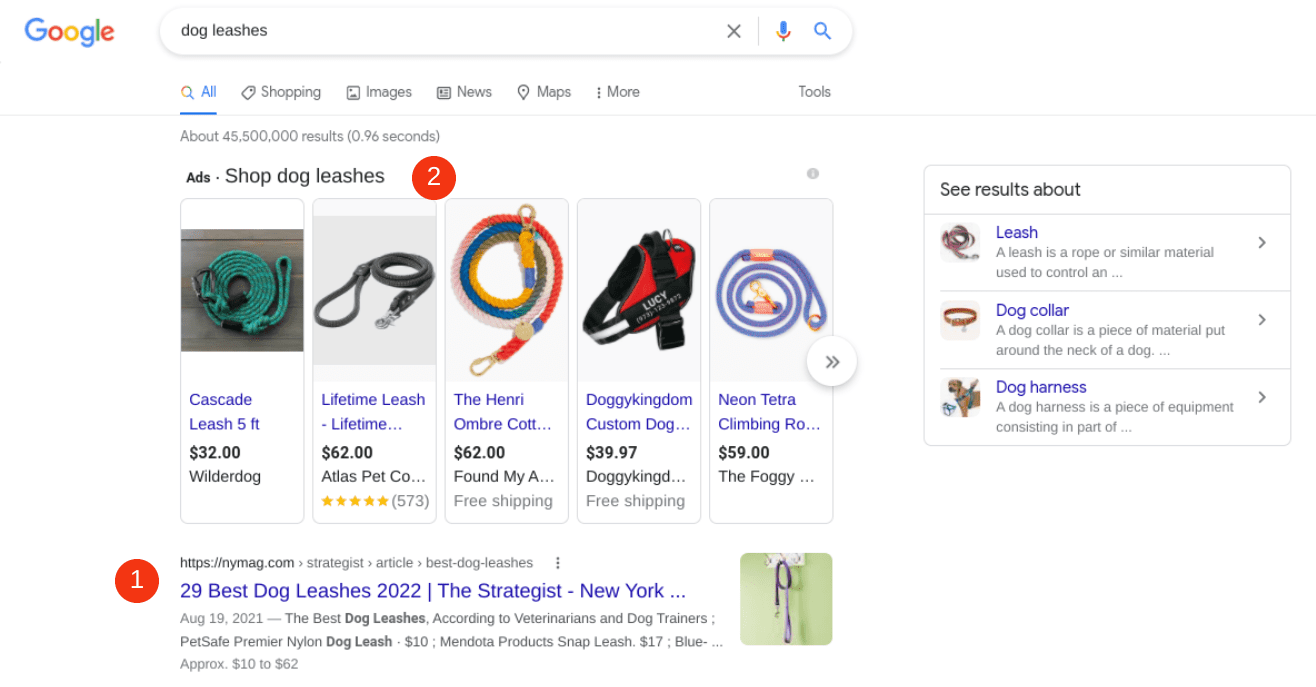
White hat SEO techniques follow the terms established by major search engines such as Google, Bing, and Yahoo. They contrast with black hat SEO, which relies on deceptive, unethical methods. Some examples of black hat SEO include keyword stuffing, link cloaking, and purchasing links.
While some black hat SEO techniques might actually improve search engine visibility, they typically only have temporary benefits. Eventually, Google will recognize these harmful practices and penalize the sites that use them.
Therefore, following white hat SEO techniques is crucial to maintaining your position in SERPs, preventing search engines from penalizing your website. If your site gets deranked, it can negatively affect your traffic, reputation, and sales. And if your site gets blacklisted, well, that’s a hard hole to climb out of.
6 Best White Hat SEO Techniques
Now that we understand more about white hat SEO and why it’s important, let’s look at using it. Below are the six best white hat SEO techniques you can implement on your website!
1. Familiarize Yourself With Webmaster Guidelines
To ensure you’re adhering to white hat SEO tactics and not entering the “grey” area of black hat SEO, we recommend reading Google’s Webmaster Guidelines.
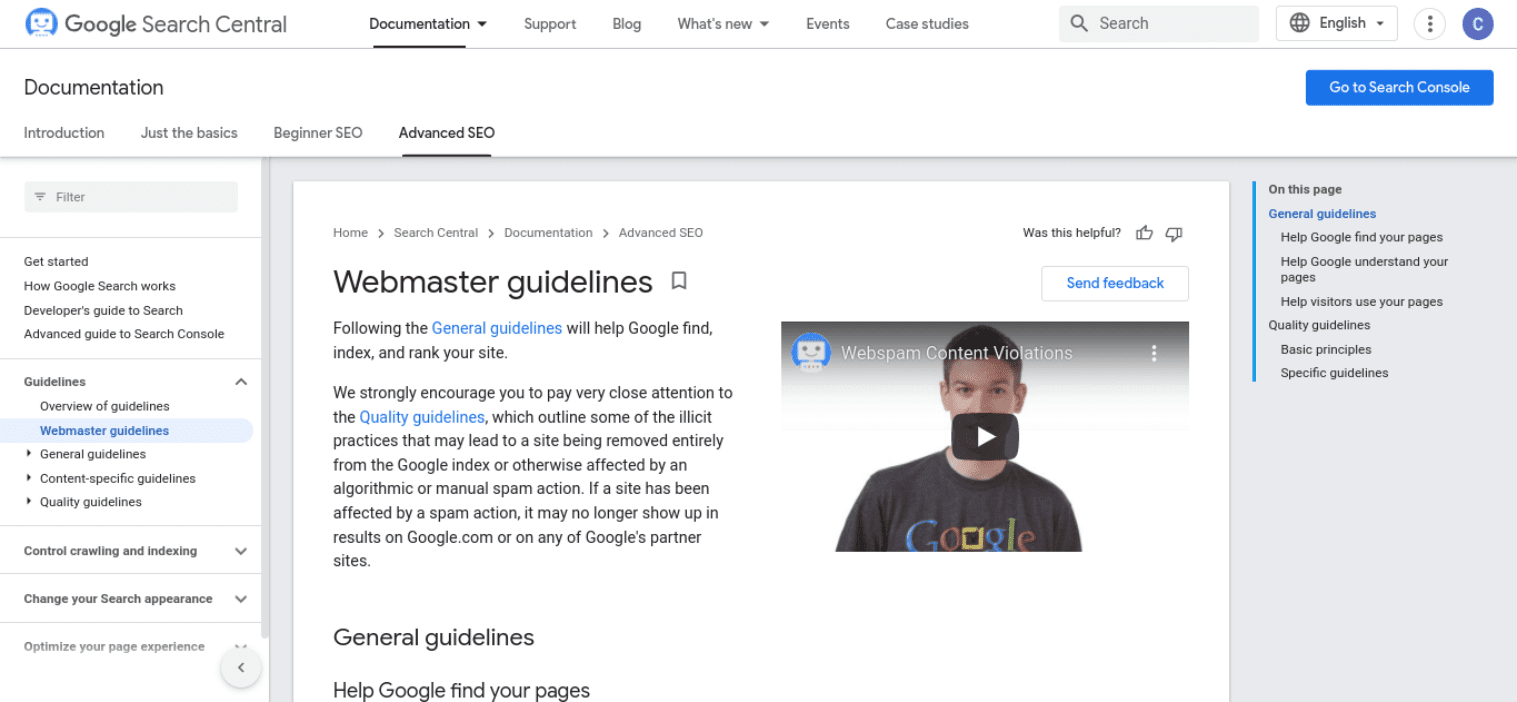
These guidelines detail how Google finds, indexes, and ranks your site. Learning about them can help you better understand which methods can optimize your site in a safe, approved way. The guidelines also outline the illicit practices that can lead to your website being blacklisted or banned permanently.
You might also consider conducting an SEO audit of your website. This process can help you better understand the effectiveness of your current SEO strategy and give you a baseline.
Google isn’t the only site that publishes these guidelines, either. Be sure to check out Bing’s list (which also applies to other engines such as Yandex and Ecosia) so you can stay on the up-and-up there, too.
2. Publish Unique, Relevant, and Quality Content
A staple of white hat SEO is consistently producing high-quality content. However, it’s also essential that your articles are original and match search intent. In contrast, black hat SEO often focuses on low-quality and duplicated content that is intended only to get eyes on the page for ads (or even attempted malware installation).
When creating your content, the best thing you can do is solve a problem for your users. What questions and concerns do they have that your content and services can help them with? They are searching for a reason, so you need to be the one that provides that knowledge.
We also suggest considering your word count. While Google doesn’t recommend a specific post length, the search engine favors lengthy content versus shorter posts. As a general rule of thumb, it’s best to aim for at least 1,000 words for blog posts.
Also, to make optimizing your website content easier, consider installing a plugin such as Yoast SEO.

This freemium tool can help you optimize your posts and pages for your target keyword:
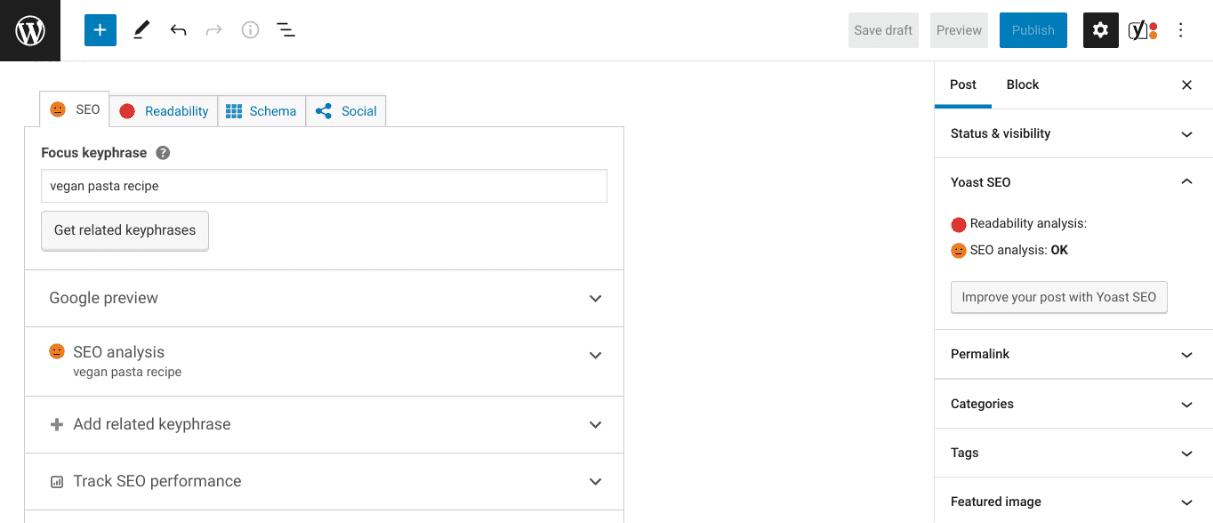
Yoast SEO provides suggestions to better adhere to Google’s SEO guidelines. For example, it will evaluate your keyword density, determine whether the content is readable, and provide recommendations for optimizing your images and links.
Furthermore, Yoast SEO can identify when you are overusing your keyword. As such, it can help you avoid black hat SEO techniques such as keyword stuffing.
Yoast isn’t the only WordPress SEO plugin around, either. Check out some of the other best options such as Rank Math or Squirrly to see which feature-set works best for your site.
3. Use Keyword Tools and Place Keywords Strategically and Organically
Keywords are critical for SEO. However, it’s essential to use these phrases strategically. Keyword tools such as Google Keyword Planner can help with this process:
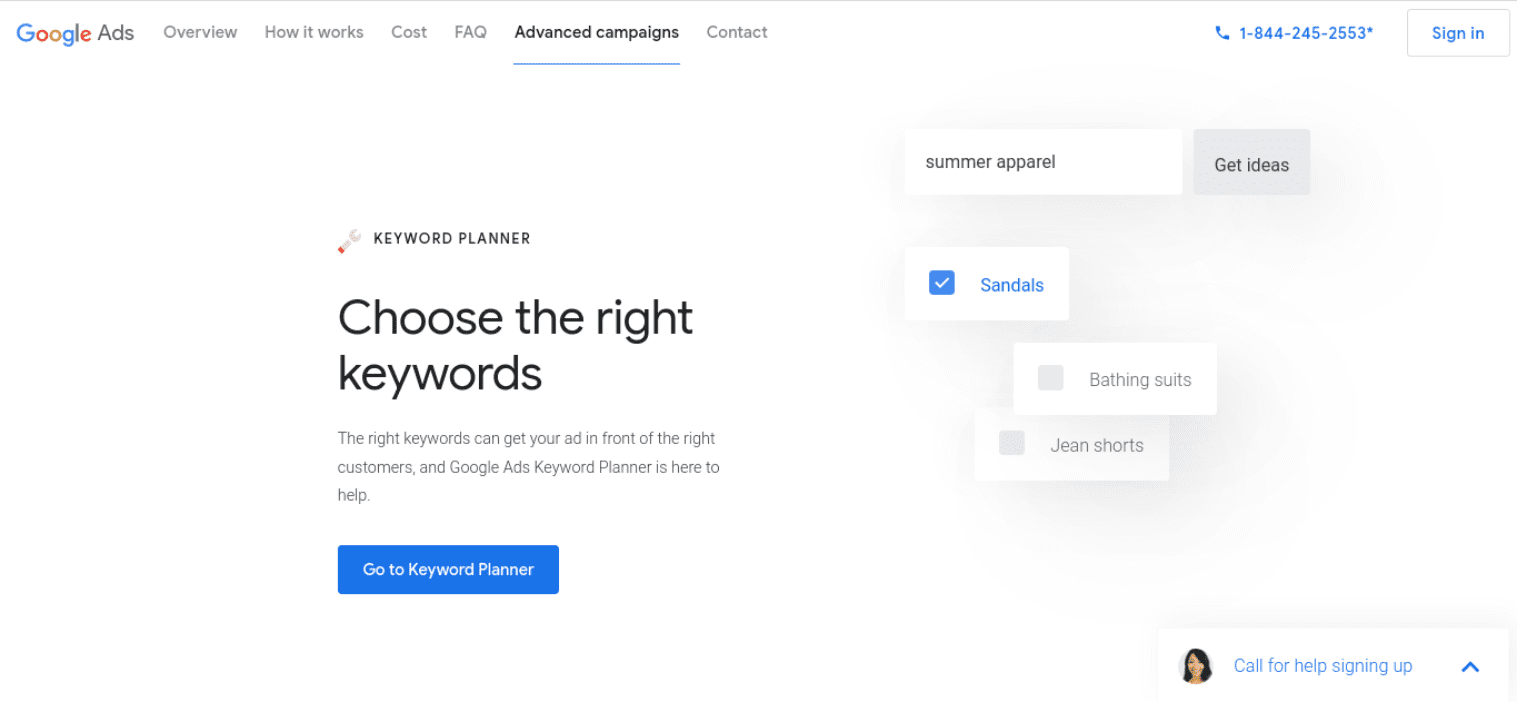
Conducting keyword analysis can help you stay away from overly competitive keywords. Research can also identify both short and long-tail keywords. Long-tail keywords tend to be more specific. This specificity can make it easier to match user intent (which we’ll discuss later in this post).
You can also brainstorm long-tail keywords by using Google Suggest:
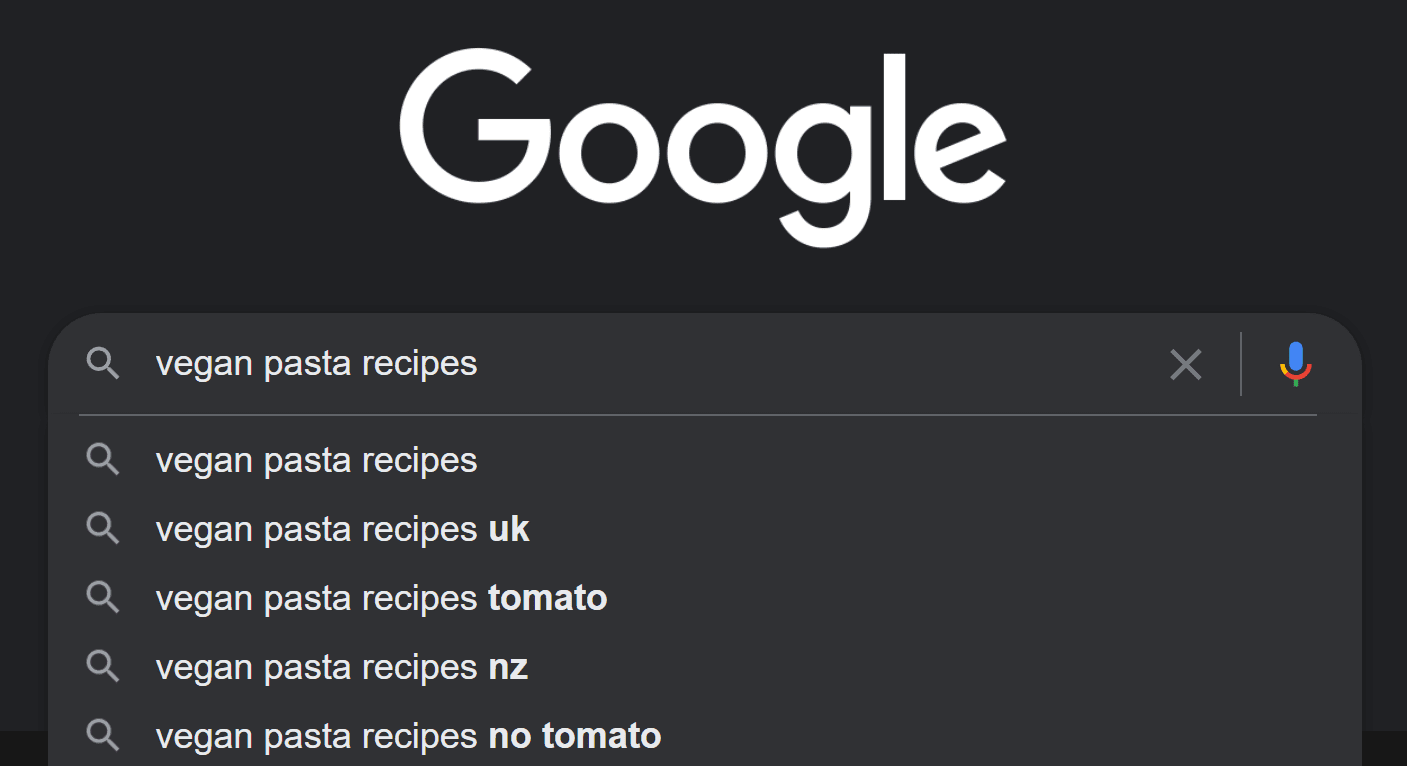
Begin typing the words you want to rank for and note the phrases that Google suggests. These keywords tend to be less competitive. Furthermore, because Google produces them, you know that users actively search for these phrases.
It’s also important to use your keywords organically on your page. It’s wise to utilize them in page titles, meta descriptions, and image alt text. Additionally, remember that you do not have to use the exact match keyword in your content.
If your long-tail keyword is “vegan pasta recipes no tomato,” you will be hard-pressed to have an natural, authentic sentence with that syntax. If your sentence reads something like “these are the best recipes for vegan pasta with no tomato that I’ve ever tried,” then Google and other search engines will recognize that.
To avoid black hat SEO tactics such as keyword stuffing, you’ll want to avoid overusing your keywords. While adding these phrases in your titles, headers, and metadata can help SEO, it can also hurt if you overdo it. It’s best to incorporate them naturally and not force their placement. Again, the SEO plugins mentioned above can help you with appropriate keyword volume.
4. Consider User Intent
Conducting keyword analysis can help you build a list of phrases to optimize your site. However, it’s important to choose keywords and create content that satisfies user intent.
User intent refers to a user’s goal when they type a specific word or phrase into a search engine. For instance, if someone searches for “vegan pasta dishes,” they’re likely expecting to find a list of vegan recipes — not sets of kitchenware emblazoned with vegan pasta.
You can use a handful of strategies to satisfy user intent. One is to make sure that your page titles accurately reflect your content. SEO page titles can help Google index your site, understand its content, and display it in relevant search results.
It also helps to make your content scannable by breaking the content into smaller, straightforward sections. For example, you can format your articles using subheadings, white space, and videos and images:
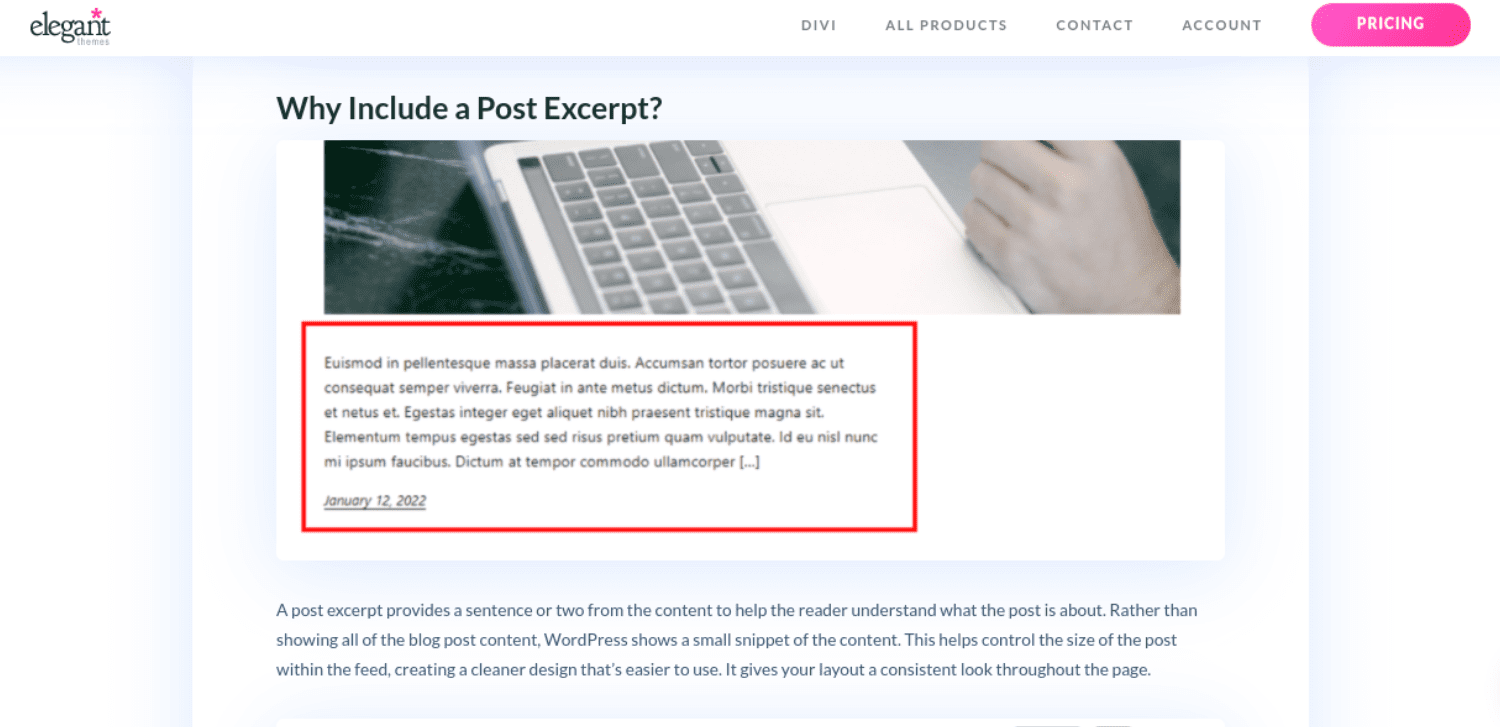
This approach can make your pages more engaging and easy to digest. It can increase the value of your content and, in turn, your SEO. If the content is easier for a person to read and scan through, it is easier for a search engine crawler to navigate, too.
5. Provide a Positive User Experience (UX)
Your website’s UX is one of Google’s ranking factors. Part of providing a positive UX is ensuring you have a speedy site. Slow loading times can increase bounce rates and cause negative impressions of your site and business.
You can assess the current page speed and performance of your WordPress site using a tool such as Google PageSpeed Insights.
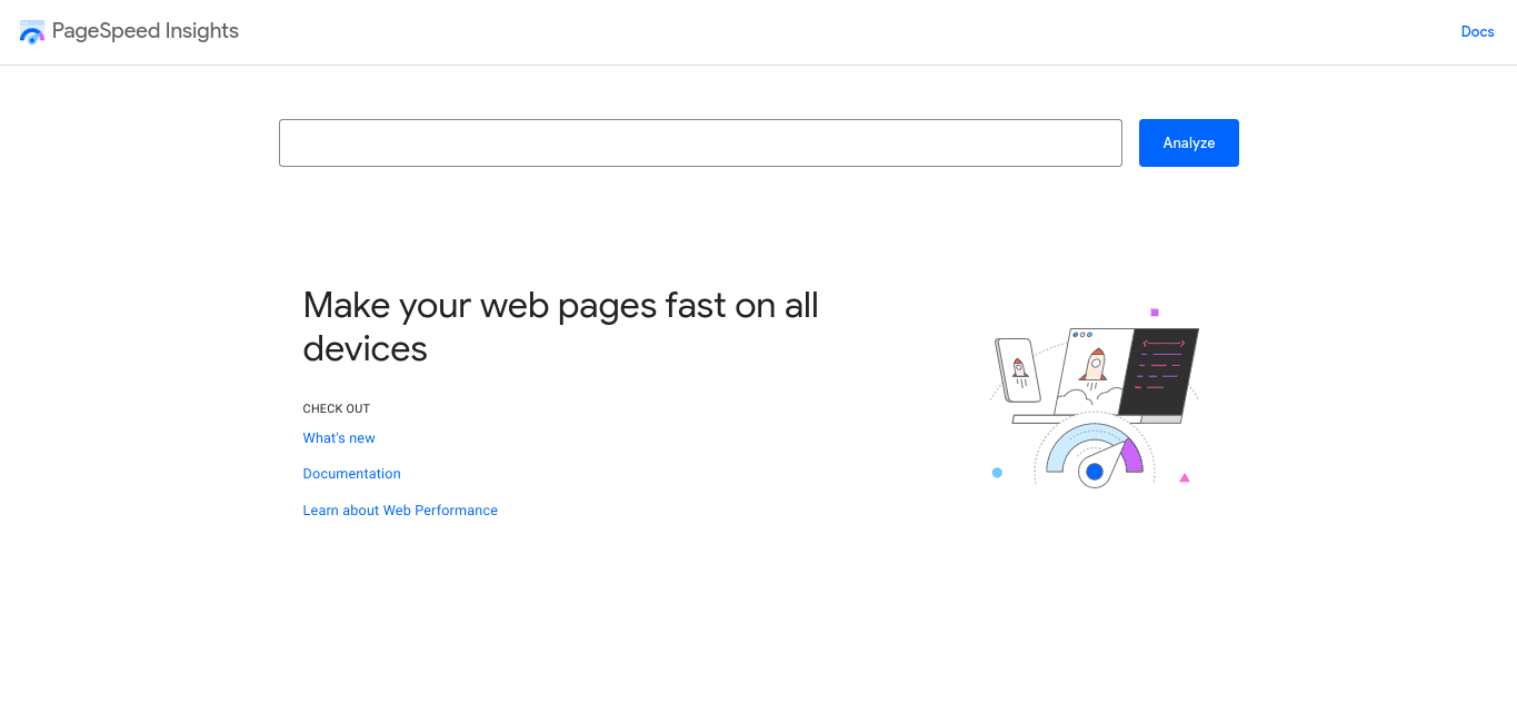
After entering your URL, the tool will analyze your site and score it on a scale from 1 to 100. It will also provide a list of specific recommendations for improvement.
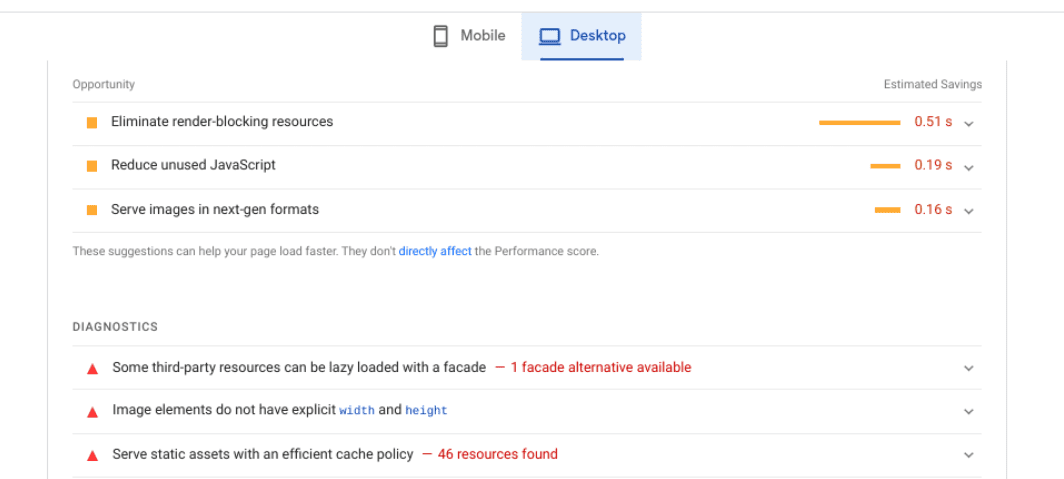
To really take advantage of speed and UX for SEO, you will want to pay close attention to Google’s Core Web Vitals. These are specific ranking factors that Google has provided that impact SEO regarding UX and usability.
Another aspect of a solid UX is making sure that your site is easy to navigate. Visitors should be able to quickly and easily find what they’re looking for and move around your website with ease. Having simple top-level navigation menus can go a long way toward this, as can having sidebar widgets displaying your most popular content.
6. Optimize Your Links
Link building is another crucial aspect of white hat SEO. Generating high-quality backlinks, optimizing your permalinks, and using keyword-rich anchor text can boost your rankings. Some link-building services can help create and manage your site’s URLs. However, it’s important to choose a reputable and credible service. You want to avoid any platform that consists of selling or farming links, which are black hat SEO tactics.
A link farm uses a collection of interlinked web pages to boost each page’s rank. While these farms may seem harmless, search engines that detect link schemes will flag them, as well as all the pages they link to.
In contrast, some recommended white hat SEO strategies can optimize your external URLs. For example, to help build backlinks, you might consider guest posting. This method can help you develop professional relationships and expand your audience while organically linking back to your website. Google cares greatly for relevant, contextual backlinks, which is why link farms and directories are considered low-quality and even black hat.
However, we don’t recommend leaving a link to your website in the comments sections of other blogs. The only exception to this rule is if your input is highly relevant to the post content.
It’s also a good idea to regularly monitor your site for broken links, as these can hurt the UX and, in turn, your SEO. To make this easier, you can use a tool such as Broken Link Checker:
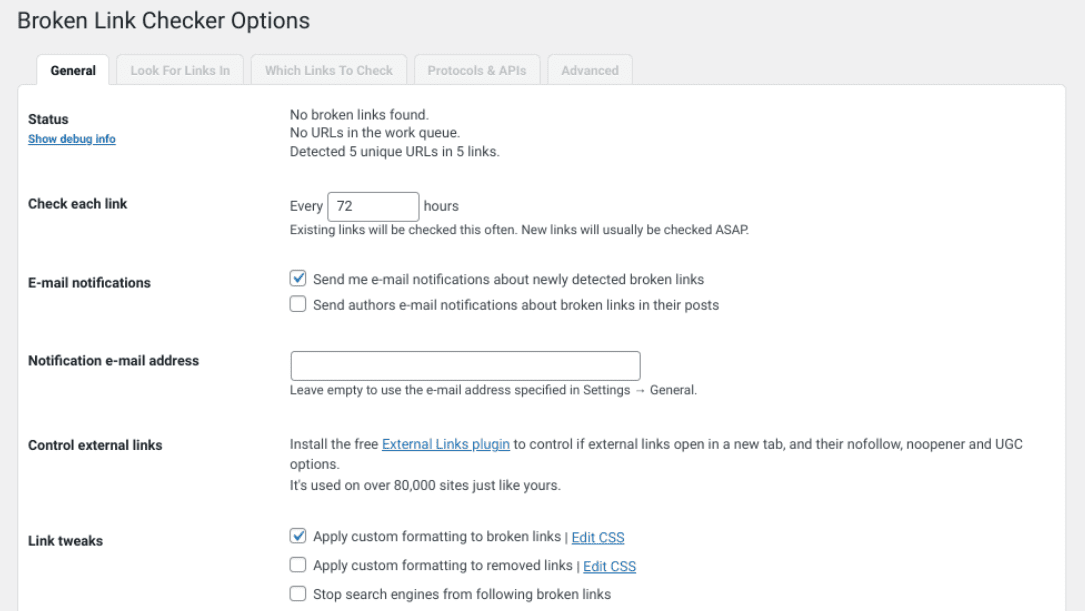
Finally, we suggest using the Skyscraper Technique for building backlinks. In a nutshell, this method involves finding link-worthy content and creating a more informative and in-depth post on the same topic. Then, you can reach out to other websites and ask them to link to your article instead.
Conclusion
SEO is critical for achieving search engine visibility and high placement in SERPs. However, you’ll want to adhere to white hat SEO tactics to prevent your site from getting blacklisted. Using approved optimization methods ensures the integrity of your website and can boost your rankings in organic search engine results.
As we discussed in this post, here are six white hat SEO techniques you can implement on your website:
- Familiarize yourself with the Google Webmaster Guidelines.
- Publish original, relevant, high-quality content consistently.
- Use keyword tools such as Google Keyword Planner.
- Consider user intent.
- Provide a positive UX.
- Optimize your links.
Do you have any questions about white hat SEO techniques? Let us know in the comments section below!
Featured Image via Sammby / shutterstock.com









Is it necessary to place the full-length keyword in the introduction while writing an article? Because Yoast SEO recommends it. But sometimes inserting the full-length keywords in the introduction makes it odd?
These days, you shouldn’t need to get it in as an exact match in the sentence. As long as the words are in the same sentence, the search engines can parse it out. So you wouldn’t need to have “best archival software wordpress plugin” but work those words into a sentence like “Let’s take a look at some of the top WordPress plugins that may be able to replace the best archival software on the market.”
Thanks Will – another great article on the back of your Black Hat post. I definitely encourage my clients to work on all aspects of their site and do so on my website regularly. Although finding the time to work ‘on’ your business when you are busy working ‘in’ your business is my main struggle. Do you have some recommendations for more hours in the day??
You’re welcome, Holly. SEO is a full-time job!
That was some great way of explaining. Simple yet detailed information. Thanks, Will.
You’re welcome 🙂
Good stuff